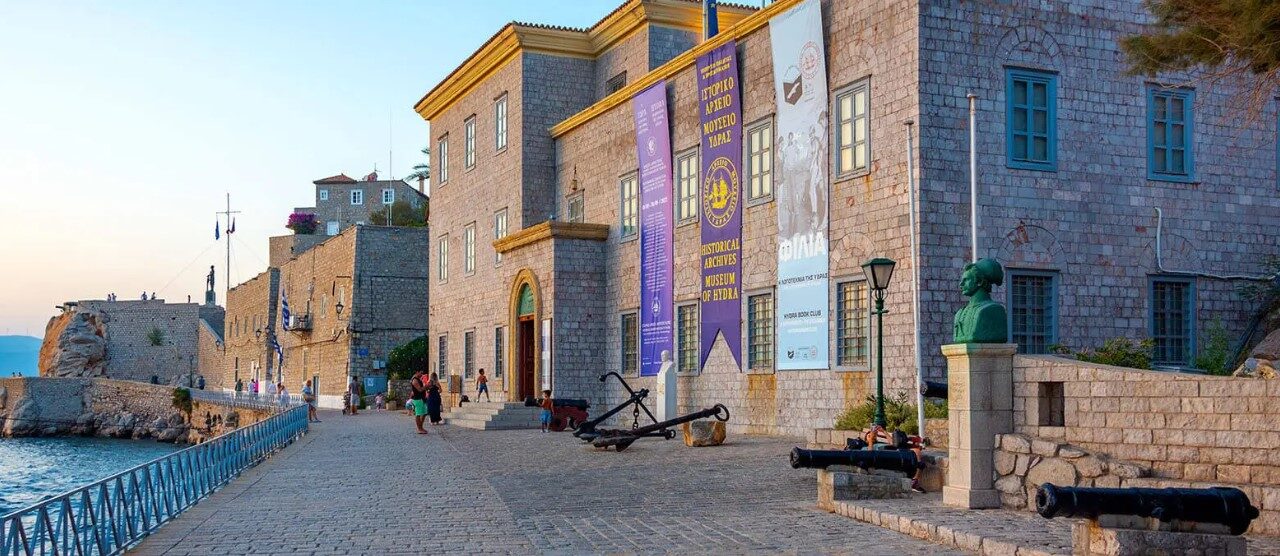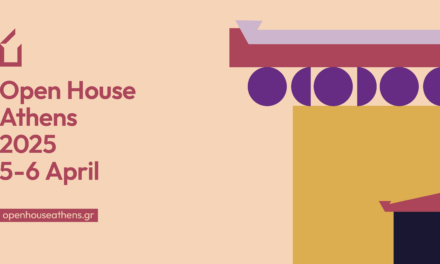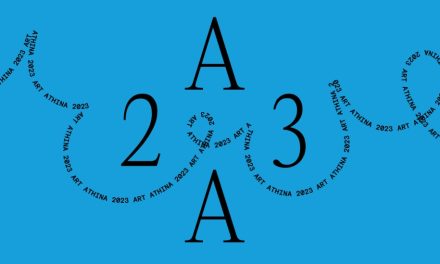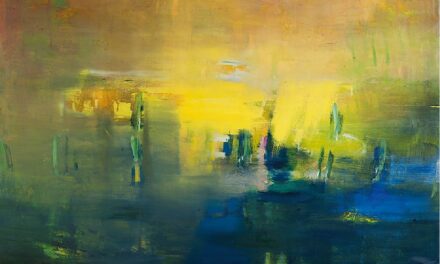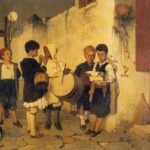The island of Hydra has been one of the most important cultural centers since the 1950s, attracting renowned figures from the worlds of art and literature, both from Greece and abroad. This legacy has established Hydra as a vibrant hub of artistic creation. Currently, three notable exhibitions offer visitors the opportunity to engage with a wide range of artistic expressions: “Tamata, Sincere Hope”, an exhibition of religious votive offerings from the collection of Lola Daifa; “Nike of Samothrace”, a photography exhibition by Amalia Sotiropoulou; and “Apocalypse Now and Then”, the DESTE Foundation for Contemporary Art’s 2025 exhibition by Romanian artist Andra Ursuţa. A perfect reason to visit the car-free Saronic island of Hydra.
The Historical Archive and Museum of Hydra (cover photo, visitgreece.gr), in collaboration with the Holy Cathedral of the Assumption of the Virgin Mary, is hosting the valuable collection of votive offerings (tamata) by Lola Daifa until August 31. The exhibition, titled “Tamata, Sincere Hope”, curated by art historian Louiza Karapidaki, presents over 500 religious votive offerings, gathered with care and reverence from churches and pilgrimage sites across Greece. Displayed in a manner that highlights both their artistic value and profound spiritual meaning, the tamata serve as silent narratives of faith, hope, and devotion.
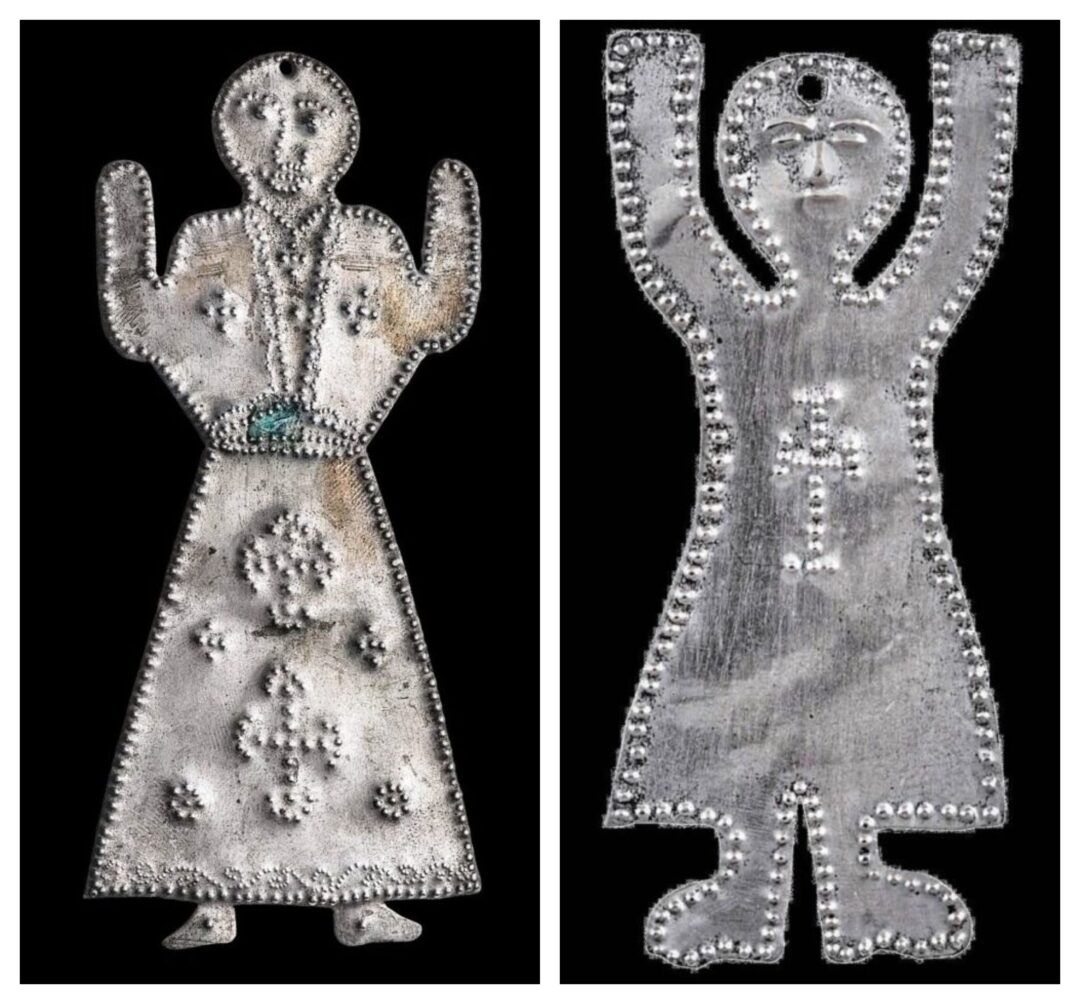
The President of the Historical Archive and Museum of Hydra, Dina Adamopoulou noted that “…this is not merely a cataloging of objects, but an act of deep cultural sensitivity and inner reflection. The votive offerings are displayed in a way that highlights not only their artistic value but also their moving spiritual power, creating a space of silent communication between the visitor and the sacred”. Votive offerings (tamata) shaped as a female figure in an attitude of supplication from Lola Daifa’s collection
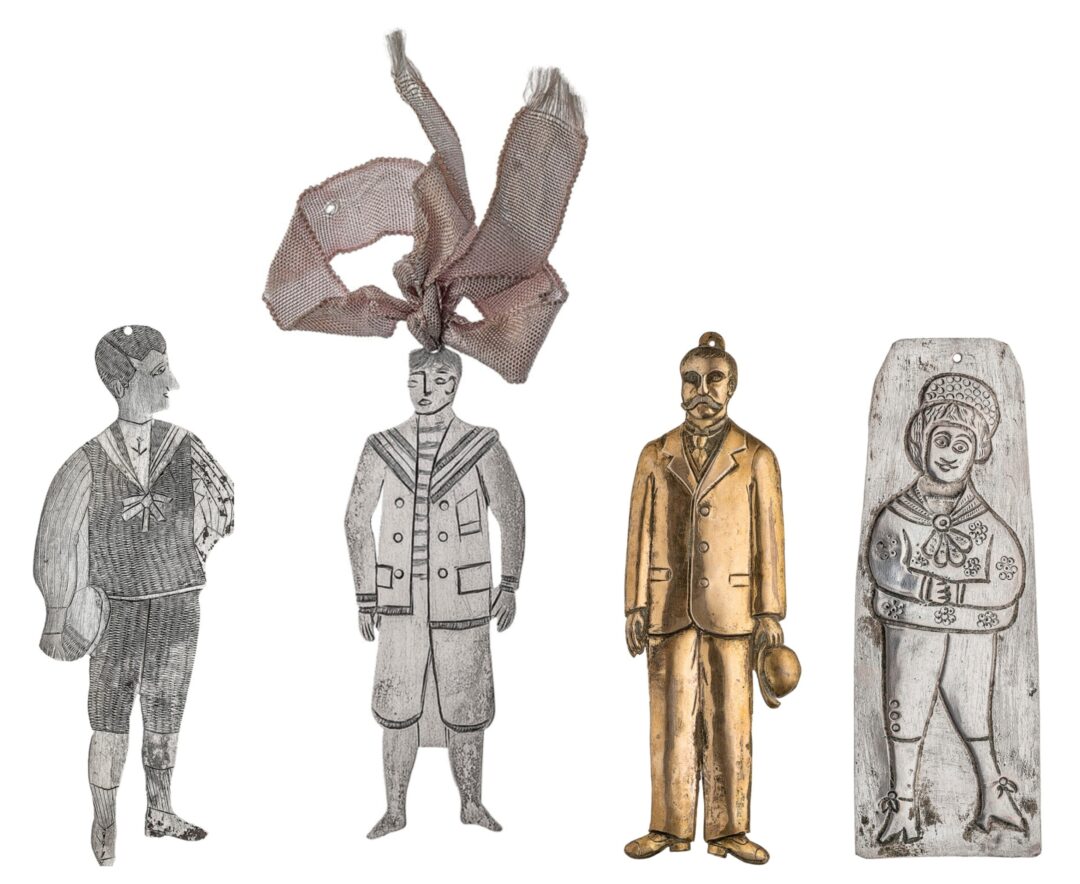
Votive offerings (tamata) shaped as a male figure from Lola Daifa’s collection
A tama is a type of votive offering, or ex-voto, used in the Eastern Orthodox Church, particularly within the Greek Orthodox tradition. Tamata are usually small metal plaques – made from base or precious metals (commonly silver, but also gold or bronze) – and feature embossed images symbolizing the subject of prayer for which they are offered. These offerings are made to icons or shrines of saints, either as a plea for divine intervention or in gratitude for prayers answered. Tamata can be purchased at shops selling Greek Orthodox religious items and are often hung with a ribbon on poles or hooks near an icon or shrine. This ritual is usually accompanied by a prayer and sometimes the lighting of a votive candle. Pilgrimage destinations across Greece frequently display shrines adorned with numerous tamata, bearing silent witness to the faith and hopes of countless petitioners. (Source: en.wikipedia.org)
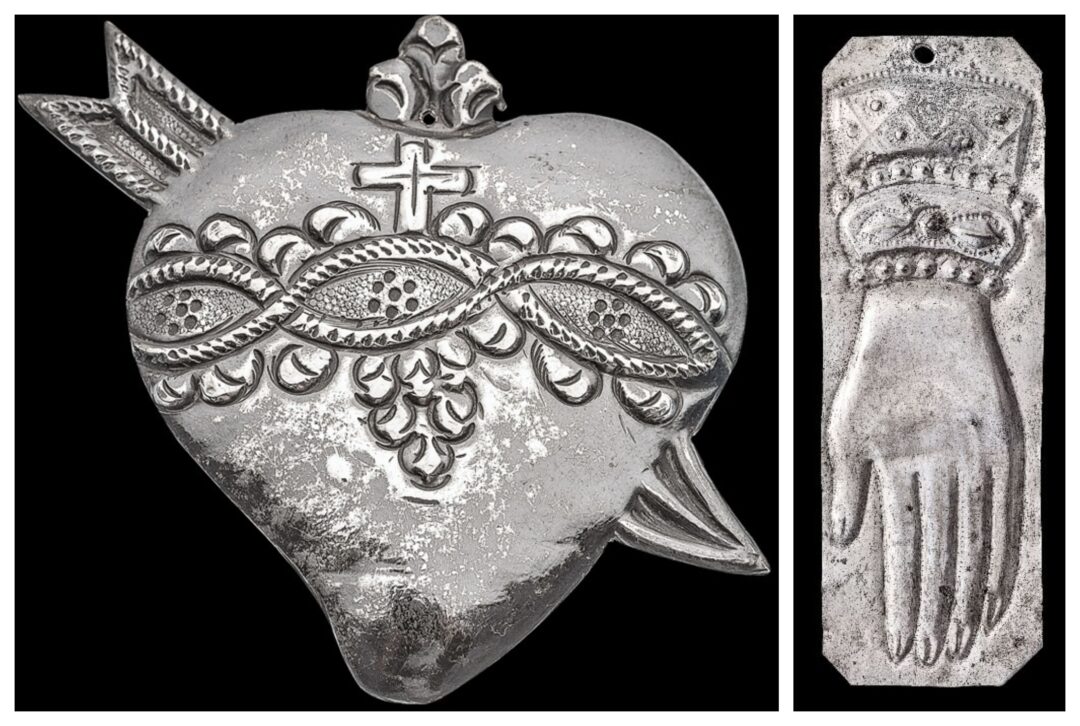
A wide variety of images can be found on tamata, each capable of multiple interpretations depending on the context of the prayer. A heart, for example (left) may symbolize a plea for love or healing from a heart condition. Hands (right) or legs often represent ailments of the limbs, while a pair of wedding crowns may indicate a prayer for a happy marriage. A torso might refer to general bodily afflictions, and so on. (Photos: collection of votive offerings by Lola Daifa)
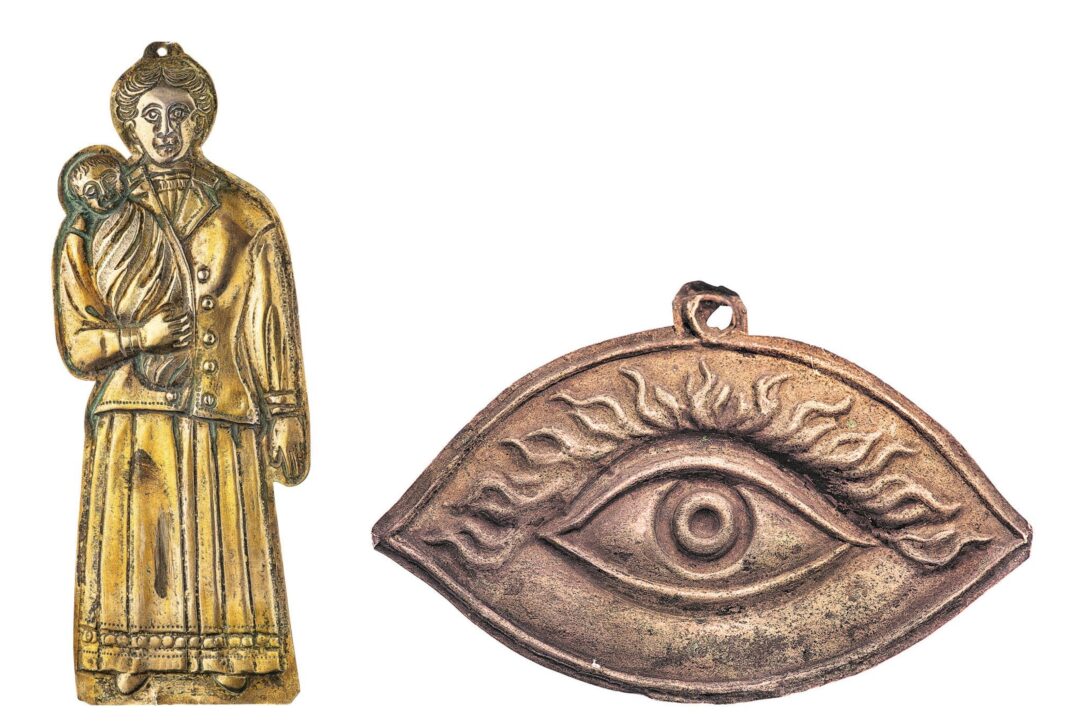
Votive offerings (tamata) shaped as a female figure carrying a baby (left), and an eye, probably indicating an eye affliction (right) from Lola Daifa’s collection

A votive offering in the shape of a ship from Lola Daifa’s collection
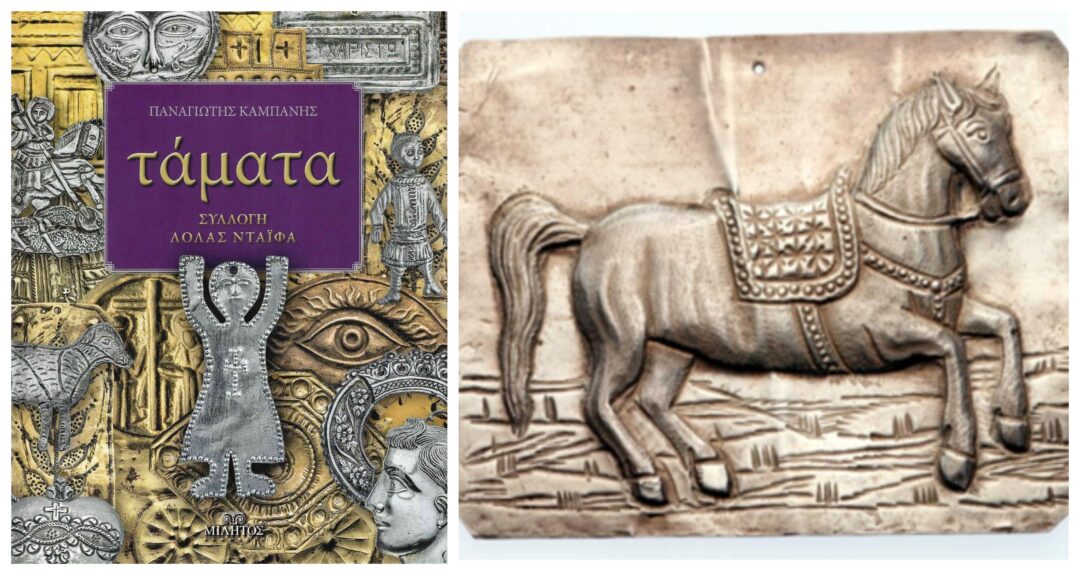
A votive offering figuring a horse from Lola Daifa’s collection (right). Album “Votive Offerings – The Lola Daifa Collection”, a scientific study and research into the universe of votive offerings by Dr. Panagiotis Kampanis, Archaeologist – Historian, Militos Publications, 2022 (left). “…when the accumulated ancestral knowledge and the science of the time failed to bring healing, people turned first to magic and then to divine intervention, following the reasoning: “For where God wills it, the order of nature is overcome.” This phrase precisely defines the miracle. The biblical “your faith has healed you” encapsulates this hope, which quickly transforms into conviction. The temples of the ancient god Asclepius, as well as the churches and monasteries dedicated to the many healing saints of Christianity, served as “clinics free of charge”. Each saint has specific healing attributes…”
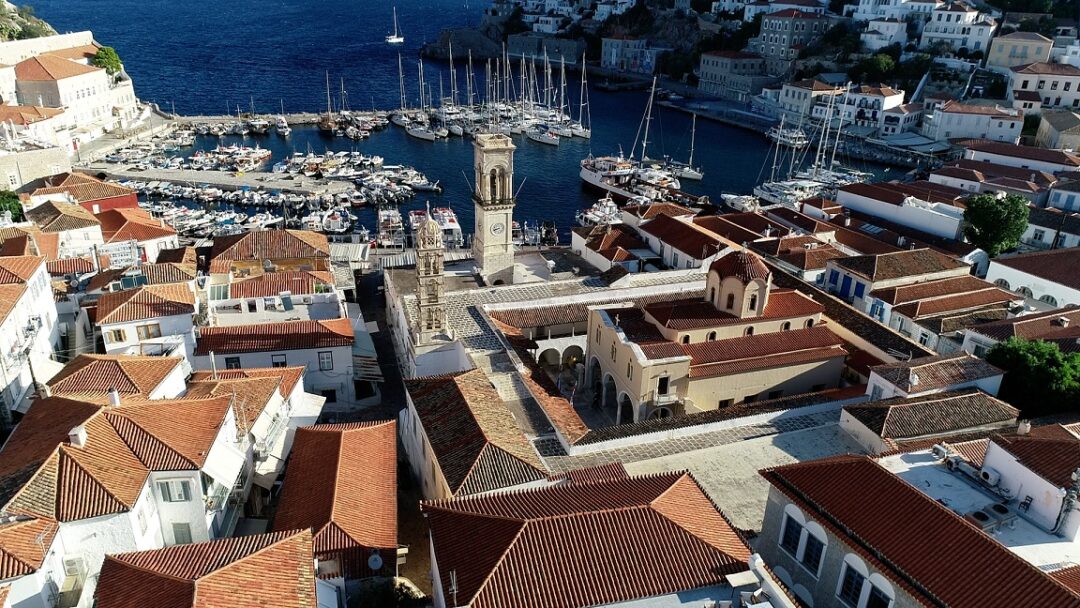
The Cathedral of the Assumption of the Virgin Mary, else called the “Monastery”, at the center of the main port and is the Metropolis of Hydra. The inauguration of the Temple dates before the 17th century. The Cathedral is a three domed basilica with a dome and the aisles are divided by rows of columns. It is made all of solid white marble with rich and intense decoration. In the temple there are also icons with ornate coverings that were gifts to the church by wealthy Hydraian and naval Warriors. Inside the building of the Cathedral is located a small Ecclesiastic and Byzantine Museum (Source: hydra.gr, Photo: press.ert.gr)
The Historical Archive and Museum of Hydra houses many items donated by the descendants of the families who dominated the social structure of the island in the 1800’s and were instrumental in the launch of the Greek War of Independence. The museum has a distinctive nautical theme which reflects the strategic importance that Hydra held during that time as a safe harbour from which to launch the Greek fleet.
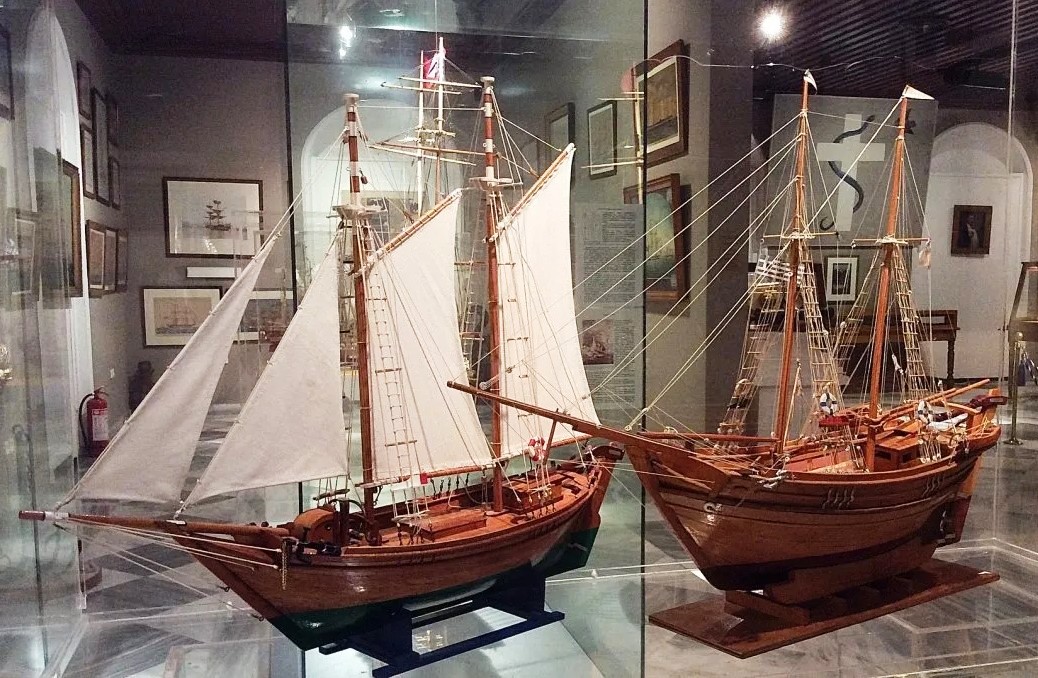
At the Historical Archive and Museum of Hydra, exhibits from the Balcan and first and second World Wars are displayed, as well as traditional costumes from Hydra and figureheads from battleships. A historical picture gallery presents works from many great Greek and foreign artists. There are also exhibits of works of art from 18th and 19th Century, nautical maps and the Map of Riga Feraios. In this place is also been kept safe the silver urn with the stuff heart of the Admiral Andreas Miaoulis (Source: hydra.gr)
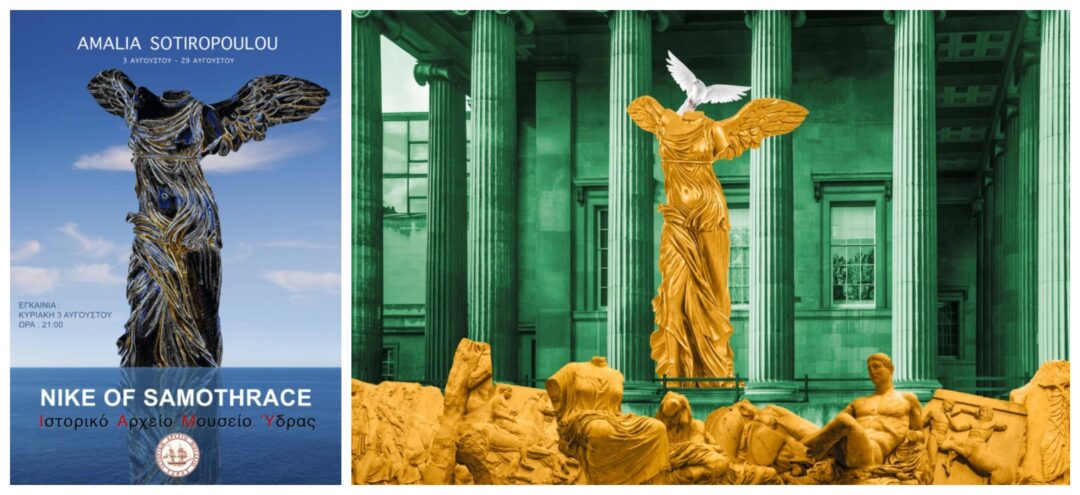
At the Historical Archive and Museum of Hydra, a photography exhibition by the artist photographer Amalia Sotiropoulou titled “Nike of Samothrace” is also hosted until August 31. The artist redefines Greek identity through her lens, creating images that balance between the past and the present, the classical and the contemporary. Her work is characterized by a neo-pop aesthetic, where mythology, history, and contemporary culture engage in a dialogue in a bold yet deeply studied manner.
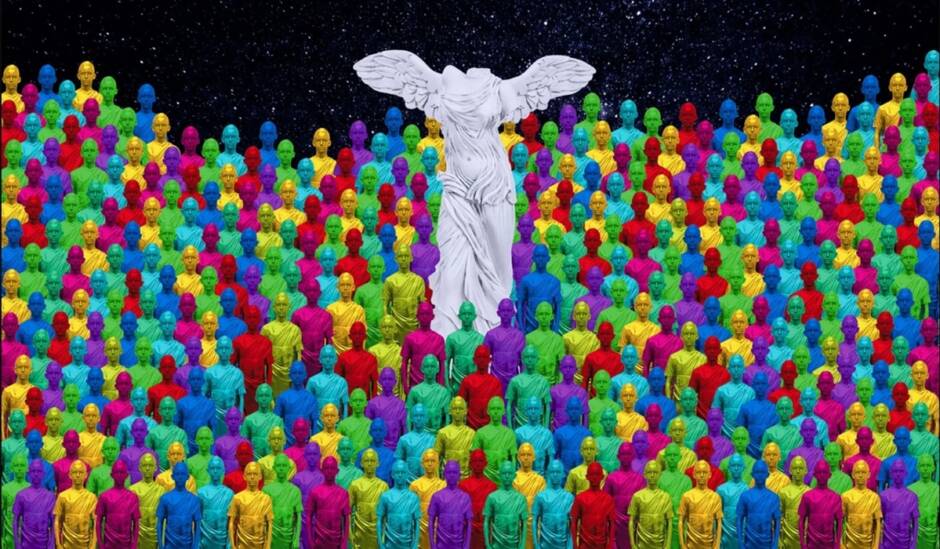
One of the most striking elements in Sotiropoulou’s work is her ability to transform iconic figures such as the Caryatids, the Sirens, or the Nike of Samothrace—giving them a new interpretation through the dynamism of light, color, and composition. Her perspective does not merely replicate classical beauty but reconstructs it, adding elements of modernism and abstraction that challenge the viewer to reflect on their cultural heritage.
Showroom “DESTE Foundation” was inaugurated in June 2009 in the old slaughterhouses of Hydra, which was granted by the municipality. The recently restored and renovated building retains the features and traits of the past, preserving the original elements of its old identity while serving as a unique exhibition space. Every summer the Foundation hosts a series of contemporary art exhibitions on the island, including the assignment of the space to a single artist or team invited to stage a unique, site-specific exhibition.
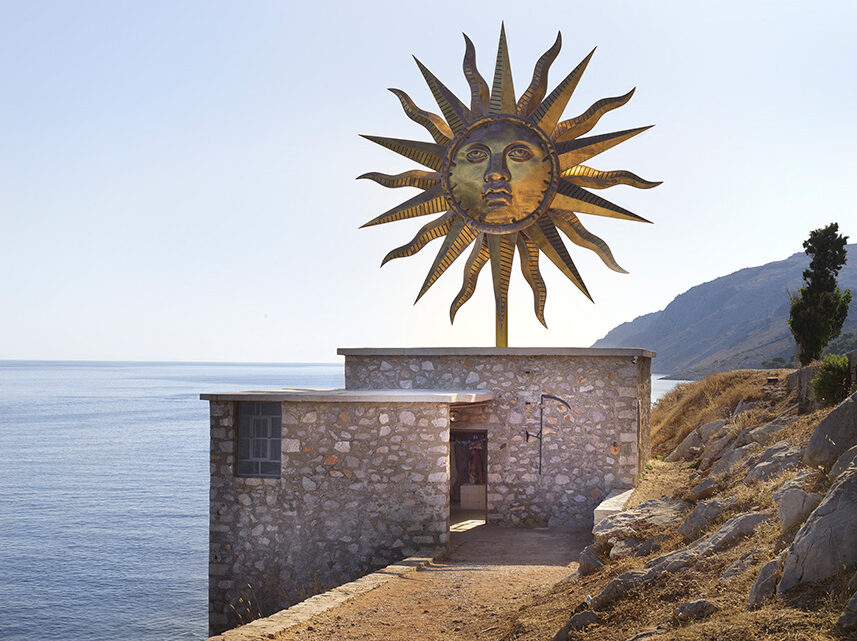
Above the Slaughterhouse is Apollo Wind Spinner (2020–2022) by Jeff Koons, a 9.1 meter (30-foot) wide reflective wind spinner that greets people entering the port of Hydra on one side and, on the other, welcomes people walking to the building. The face of the wind spinner is that of Apollo. It was first installed at the Slaughterhouse in 2022 for the exhibition Apollo, and remained permanently installed on Hydra, finding its home on the island and becoming one of its new landmarks.
This year, the DESTE Foundation for Contemporary Art presents Apocalypse Now and Then, a solo exhibition by Romanian artist Andra Ursuţa. The show will be on view at the Foundation’s Project Space until October 31st. This marks Ursuţa’s first major exhibition in Greece.
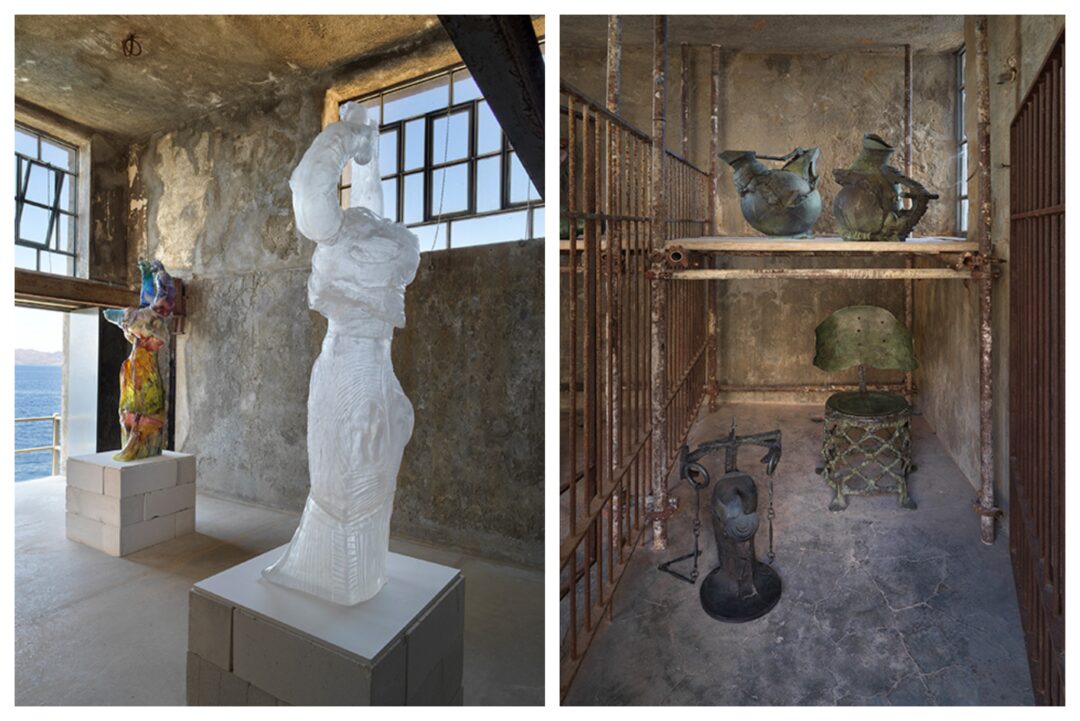
Andra Ursuţa, Apocalypse Now and Then, Installation view, © Andra Ursuţa; Courtesy the artist, David Zwirner, Ramiken, Photo: Dario Lasagni. Ursuţa draws from the visual language and display strategies of archeological museums to invent faux-historicist artefacts belonging to a defunct civilization whose relics seem to speak to the anxieties of our present. Both familiar and absurd, the artist displays fragments of sculptures and studio detritus that have been successively built up and destroyed with analog and digital tools. These works explore the history of object-making and sculpture and the ways in which this manually-derived system of knowledge and speculation has come to shape our visual world. Apocalypse Now and Then plunges viewers into a truncated historiography where passingly familiar ancient tropes, grotesque votives, and scarred bronze figures hover between archaeology and fiction.(Source: deste.gr)
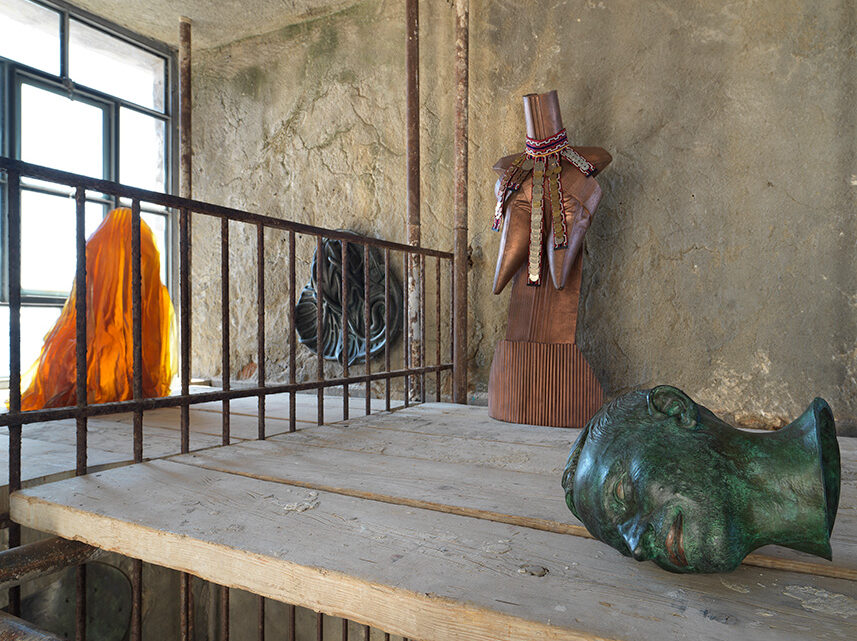
Andra Ursuţa, Apocalypse Now and Then, Installation view, © Andra Ursuţa; Courtesy the artist, David Zwirner, Ramiken, Photo: Dario Lasagni.
Read also:
Hydra: a haven for international artists
I.A.
TAGS: ARTS | CONTEMPORARY | EXHIBITIONS | MUSEUMS | TOURISM

